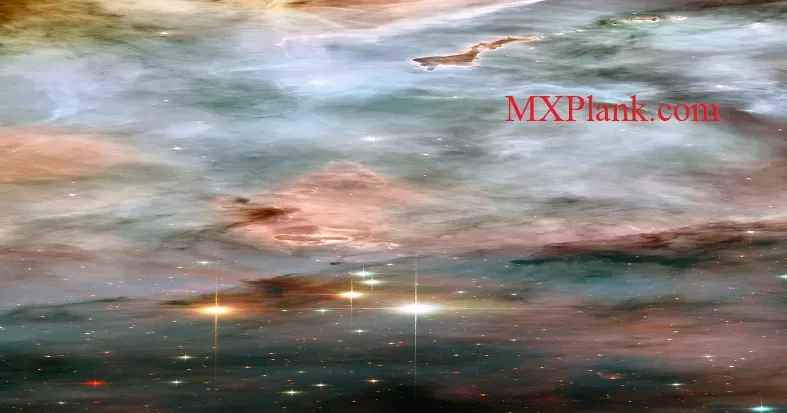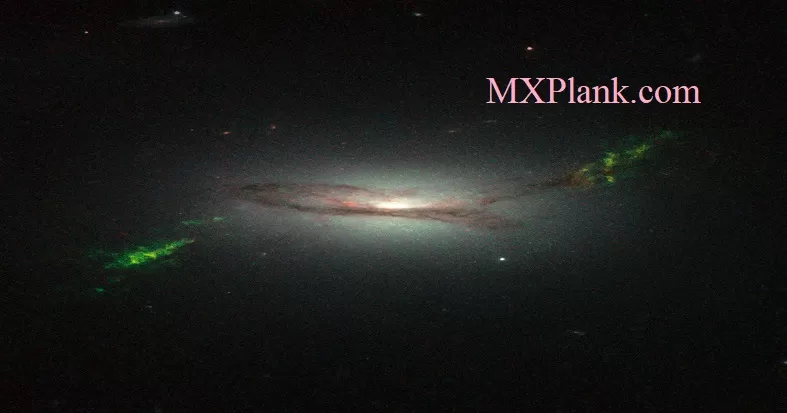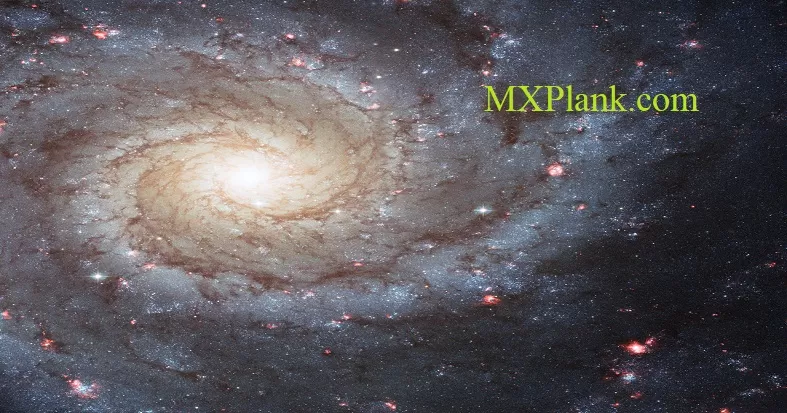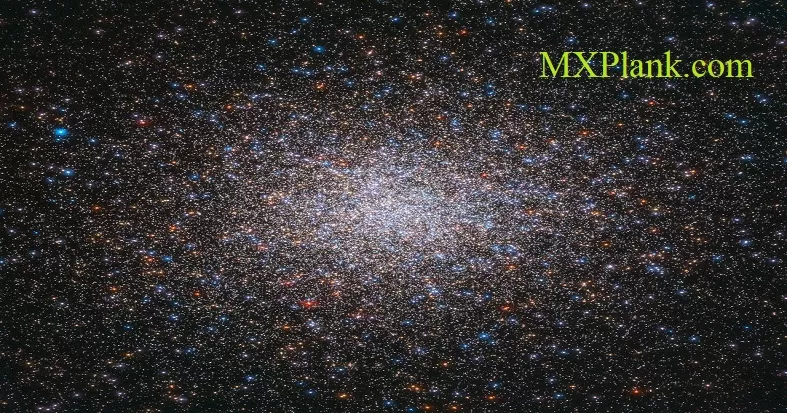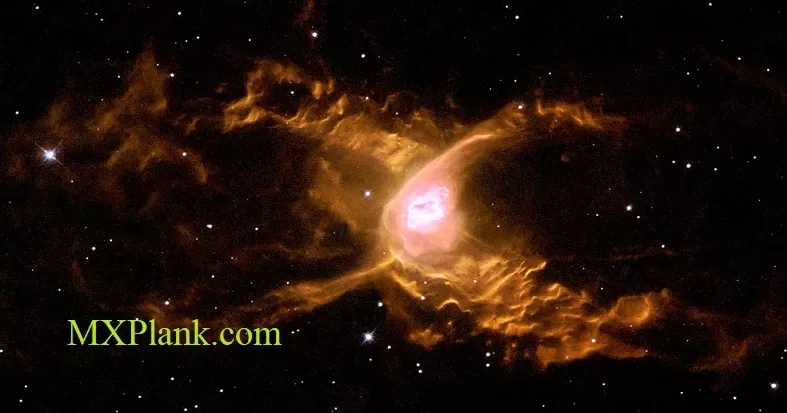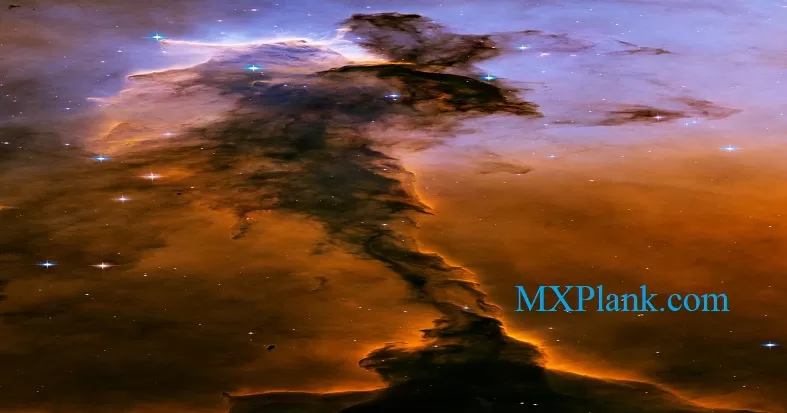Cloaked in red

This stunning new Hubble image shows a small part of the Large Magellanic Cloud, one of the closest galaxies to our own. This collection of small baby stars, most weighing less than the Sun, form a young stellar cluster known as LH63. This cluster is still half-embedded in the cloud from which it was born, in a bright star-forming region known as the emission nebula LHA 120-N 51, or N51. This is just one of the hundreds of star-forming regions filled with young stars spread throughout the Large Magellanic Cloud.
The burning red intensity of the nebulae at the bottom of the picture illuminates wisps of gas and dark dust, each spanning many light-years. Moving up and across, bright stars become visible as sparse specks of light, giving the impression of pin-pricks in a cosmic cloak.
This patch of sky was the subject of observation by Hubble's WFPC2 camera. Looking for and at low-mass stars can help us to understand how stars behave when they are in the early stages of formation, and can give us an idea of how the Sun might have looked billions of years ago.
The Large Magellanic Cloud appears as a free-floating dusty patch or random cloud in a quiet region of the sky. This hazy patch is a satellite galaxy to our Milky Way. It's one of the closest galaxies to us at about 200,000 light-years away.
The Large Magellanic Cloud is about 40,000 light-years closer than the Small Magellanic Cloud and more than 2 million light-years closer than the Andromeda galaxy
For observers south of about 20 degrees south latitude, the Large Magellanic Cloud is circumpolar, meaning that it can be seen (at least in part) all night every night of the year, weather permitting.
In the Northern Hemisphere, only observers south of about 20 degrees north latitude can ever see it at all. This excludes North America (except southern Mexico), Europe, northern Africa and northern Asia.
The Large Magellanic Cloud is located about 22 degrees from the South Celestial Pole, approximately on the border between the constellations Dorado and Mensa in a region of faint stars. It covers an area of sky about 9 by 11 degrees, and shines with a total integrated magnitude of approximately zero. If all of its light were concentrated in a starlike pinpoint, it would be one of the brightest stars in the heavens. However, since the light is spread over nearly 100 square degrees, it appears only as a faint smudge.
From tropical latitudes in the Northern Hemisphere, where it still can be observed, the Large Magellanic Cloud is best seen in the evening from December to April. When the constellation Orion reaches its highest point in the sky, so does the Large Magellanic Cloud.
But, even at 15 degrees north latitude (the latitude of Central America), the Large Magellanic Cloud never gets far above the southern horizon.
You won't need to starhop to this object unless your sky is really bright. In a dark sky, you can just see it, using your eye alone. However, it's fairly easy to star-hop to this southern treasure by using the two brightest stars in the nighttime sky: Sirius and Canopus. Draw a line from Sirius and past the right side of Canopus to descend to the Large Magellanic Cloud.
Considerable star formation in the Large Magellanic Cloud (LMC) takes place in interstellar shells, ranging from small bubbles to large super-giant shells . Among the latter, LMC 4 (Meaburn 1980) is the largest super-giant shell in the Local Group, encompassing a remarkable H i cavity of diameter ~1.9 kpc . Centered on Shapley Constellation III the area of LMC 4 comprises over 500 clusters, associations, and emission nebulae (Bica et al. 1999). In the Milky Way, the youngest stellar associations with t < 10 Myr are surrounded by bright H ii regions, and comprise high-mass main-sequence (MS) stars as well as intermediate- and low-mass pre-main-sequence (PMS) stars.
While the high-mass (OB-type) MS and intermediate-mass (Herbig Ae/Be) PMS populations are the direct signature of the youthfulness of their hosting associations, the low-mass PMS stars preserve a record of the complete recent star formation history of the region over long periods, since their evolution is extremely slow and can last up to many tens of Myr.11 Bearing this in mind, we undertake a research project that aims at a comprehensive study of the stellar populations in LMC star-forming regions, with emphasis on the recent star formation history in the vicinity of LMC 4 as recorded in the low-mass PMS populations.
The existence of such stars in star-forming regions of the LMC became recently known thanks to the angular resolution and wide-field coverage provided by the Hubble Space Telescope (HST). Archival images taken with the Wide-Field Planetary Camera 2 (WFPC2) of the young LMC association LH 52 (Lucke & Hodge 1970), located at the northeastern edge of LMC 4, revealed for the first time that low-mass PMS stars can be directly identified in the color-magnitude diagram (CMD) from photometry in V- and I-equivalent filters . While the WFPC2 images of LH 52 provided the first proof of the existence of such young stars in LMC star-forming regions, they were not deep enough to allow a statistically sound investigation of these stars. Subsequent deep photometry with the Advanced Camera for Surveys (ACS) in the same filters of the association LH 95, located at the northwest periphery of LMC 4, revealed an outstanding sample of more than 2500 low-mass PMS stars down to the (model-dependent) mass limit of ~0.2 M$_{\normalsize \odot }$, the smallest stellar mass ever observed in another galaxy (Gouliermis et al. 2007).
These data are characterized by an unprecedented completeness in their photometry due to their deepness. They provided us, thus, with a unique sample of PMS stars, which we utilized to address in detail the formation of a young stellar cluster in another galaxy. Specifically, we addressed the initial mass function (IMF) of LH 95 down to the sub-solar regime and the age of the cluster, as well as the duration of the star formation process in it, via the detection of an age spread among its low-mass PMS stars (Da Rio et al. 2010). The aforementioned investigations provide a unique insight of the faintest stars in two star-forming regions within LMC 4.
However, a more complete analysis of PMS populations in this area requires the collection of data on a larger sample of such objects. Within our HST program GO-11547 we obtained multi-band imaging of four additional star-forming regions located at the periphery of LMC 4 in order to accomplish a thorough characterization of PMS, MS, and evolved stars in their vicinity; study their formation process; determine the stellar IMF and its variations in different environments; and provide an ample set of physical parameters of all observed stellar types in these regions.
NASA/ESA and The Hubble Heritage Team (STScI/AURA)

